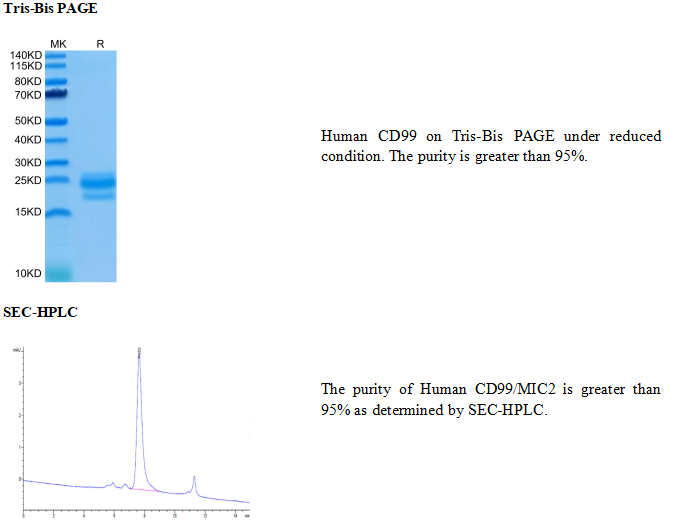CD99 (also named MIC2, E2 and thymic leukemia antigen) is the founding member of the CD99 family of molecules. The ECD contains no identifiable motifs, N-linked glycosylation sites, or cysteine residues; it does possess sites for O-linked glycosylation. The cytoplasmic region, albeit short, does have signal transduction capability. Peripheral T cells have only the long isoform, while double-positive thymocytes express both isotypes. What is unclear is the monomeric vs. dimeric status of CD99. In mouse, CD99 reportedly forms disulfide-linked homodimers . In human, however, CD99 is reportedly monomeric if only a type I isoform, and a covalent heterodimer if coexpressing type I and II isoforms. Cells known to express CD99 include fibroblasts, neutrophils, T cells, double-positive thymocytes, CD34+ stem cells, monocytes and endothelial cells. Homophilic interaction between CD99 on the neutrophil and CD99 on the endothelial cell regulates the transendothelial migration of neutrophils during inflammation. Human CD99 is only 48% aa identical to mouse CD99.
高纯度、高活性、低内毒素、高批间一致性
产品数据

-25 ~ -15℃保存,收到货之后有效期1年。 复溶后, 无菌条件下,-85 ~ -65℃保存,3个月有效期。
